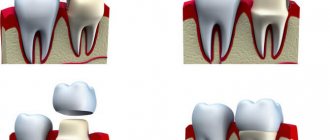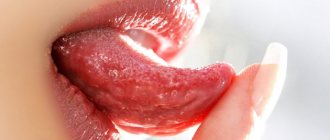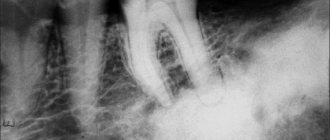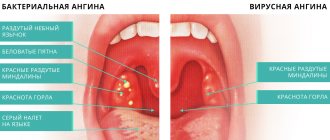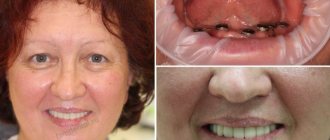What Causes Injury?
The main reason why tooth crown damage occurs is weakened enamel.
In such cases, microcracks and chips often form, which subsequently lead to a crown fracture. But even strong teeth can be injured under strong mechanical stress, however, this usually happens simultaneously. The reason for the weakening of the enamel can be:
- poor quality dental treatment;
- deficiency of calcium, phosphorus and fluorine;
- violation of nutrition rules;
- constant exposure to food acids;
- disruption of the pancreas with uneven release of acidity;
- the effect of different temperatures when eating food (hot-cold);
- jaw injuries.
With weakened teeth, a crack can also occur as a result of the habit of chewing hard objects or foods, nails, packaging, etc.
Dentists warn that those at greatest risk are patients who have had prior dental treatment with pulp removal or a filling placed on a large, diseased crown cavity.
Causes of a crack in the root of a tooth
Not all patients understand why a root crack occurs in a living tooth. The reason lies in the uneven distribution of the load. Moreover, the load can be strong and sudden, or it can accumulate over years and lead to the appearance of a crack after some time.
Typically, the cause of a crack is caused by the following factors:
- domestic trauma
- blow, fall, sudden load while chewing; - improper treatment
- strong pressure when cleaning canals or filling the root can injure the walls and in the future, with the slightest excessive load, cause a crack in the root; - error during prosthetics
- strong pressure when installing a pin or the manufacture of inappropriate dentures that unevenly distribute the load during chewing, leading to injury; - Bruxism
- unconscious clenching of the jaws, for example, during sleep, leads to a load that the patient does not notice and cannot control.
Features of tooth trauma
A crack in the crown of a tooth can be small in size, and then it can only be identified during a routine examination or diagnosis. Significant damage is noticeable visually.
If a tooth is cracked, it can be saved, but it is important not to ignore the symptoms:
With hidden damage, symptoms may appear:
- non-localized toothache of a permanent nature;
- tooth sensitivity when eating.
If you go to the dentist in a timely manner, you can save a chipped tooth. However, if you ignore the symptoms, complications may arise:
- infection or inflammation of the pulp or gums;
- tissue necrosis;
- soft tissue tumor;
- bleeding gums;
- tooth root mobility;
- tooth displacement.
For the purpose of tooth reconstruction, patients turn to the dentist much more often for aesthetic reasons, when a defect spoils the smile. It should be understood that a crown crack is a pathology and requires not only its restoration, but also treatment of the consequences of the injury.
Materials for restoration
Various materials and techniques are used to reconstruct damaged elements of the dentition. Metal-plastic, ceramics, metal-ceramics, and zirconium dioxide have the highest performance.
Metal-plastic
Crowns made from this material are considered the most affordable. The metal structure is covered with plastic material. Such crowns are made in the shape of the tooth being restored and cope well with the chewing load.
Such products can be used for two to three years, since their color and shape change over time. Taking this factor into account, metal-plastic crowns are used in intermediate prosthetics.
Advantages:
- affordable price;
- possibility of repair directly in the oral cavity;
- plasticity, due to which the impact on the enamel of neighboring units is reduced.
Flaws:
- low aesthetic indicators;
- limited variety of shades;
- relatively low surface strength;
- allergic manifestations are possible;
- short service life;
- the need to file down the crowns of adjacent units.
Ceramics
Ceramic products are popular due to their durability, long service life and external resemblance to natural teeth. Zirconium dioxide and pressed ceramics are used for manufacturing.
Advantages:
- easy installation;
- ease of care;
- 5-year warranty (with careful use, ceramic crowns can last twice as long);
- no need for depulpation before installation;
- preservation of the chewing function of the tooth under the crown;
- thinness, ensuring tight adhesion of the material to the gums;
- minimizing the penetration of food debris under the prosthesis;
- no risk of damage to mucous membranes;
- long-term preservation of the original shade.
Flaws:
- the need to file down the tooth before installing a crown;
- comparative fragility of the material;
- high installation cost.
Zirconium dioxide
Crowns made from this material outperform the previous ones in all respects. An exact imitation of natural teeth, which allows the installation of such crowns in both the frontal and lateral sections.
The frame is made of zirconium dioxide coated with veneering ceramics.
Advantages of the material:
- natural and natural appearance (crowns are difficult to distinguish from natural teeth);
- long period of operation;
- tight fixation, which prevents the development of inflammatory processes;
- no effect on mucous membranes;
- safety;
- Possibility of installation on chewing units of the dentition.
The only drawback is the high cost of the products, but it is justified by the expensive and labor-intensive manufacturing process.
What types of cracks are there?
Damage to the dental crown can have different localization and direction. The nature of the crack largely affects the ability to preserve the natural crown, and sometimes the tooth itself.
First of all, cracks are divided into two types: external and internal. Hidden injuries are considered more dangerous when damage to the root or pulp occurs. The chances of saving a tooth if the root has fractured are slim. In case of concomitant pathologies, for example, inflammation of the pulp, dentists preferentially resort to tooth extraction.
Depending on the direction, there are three types of injury.
- Diagonal. The crack runs from bottom to top in an oblique direction. If a tooth is cracked to the root, it can be saved, but only if there is no damage to the internal tissues. Even a complex crown fracture can be restored using composite materials.
- Horizontal. These injuries are the most common and predominantly occur as a result of trauma to the jaw. When a tooth is split in half horizontally, it can be saved. Depending on the area of the chip, a composite material or orthopedic pads attached to pins can be used.
- Vertical. The crack on the crown runs vertically. Visually, it gives the impression that the tooth is split into two parts. The longer the crack, the higher the likelihood of damage to internal tissues, including the jaw bones.
Dentists pay attention to eliminating damage to chewing teeth. Chewing function directly depends on the strength of the crown. A damaged tooth can no longer fully perform its function. A vertical crack in your teeth may require crowns on your molars or veneers on your front teeth.
Types of tooth root crack
Pressure can be applied both vertically and perpendicularly to the crown. The following types of cracks are distinguished:
- oblique crack of a tooth
- a diagonal fracture, usually the healthy part is much larger, and the doctor can save the tooth by removing the affected part; - transverse crack of a tooth
- part of the root is completely broken off and deprived of nutrition; the closer the crack is to the coronal part, the higher the risk of complications; - longitudinal crack in the root of a tooth
- the fracture runs vertically, along the axis of the root, often accompanied by a fracture of the crown; - comminuted tooth crack
- multiple root fractures intersecting with each other.
Dentists' recommendations
If a tooth is cracked, you can save it, but you should make an appointment with your dentist right away. The sooner professional help is provided, the less likely there are complications.
Before visiting a doctor, you should adhere to the following recommendations:
- the load on the injured tooth is completely eliminated;
- take only soft or ground food of medium temperature;
- Every hour, rinse your mouth with antiseptic agents, saline solutions or herbal decoctions.
Experts strongly advise against touching a damaged tooth with your fingers or tongue. You should not loosen it or try to use any popular recommendations. When a tooth is cracked, it can only be saved by going to the dentist.
Where to carry out preventive measures
Regular dental examinations (at least once a year) will help diagnose the problem at an early stage. When cracks appear, remineralization therapy aimed at strengthening the enamel will help stop further tissue destruction and prevent complications. The doctor will treat the teeth with a composition with a high concentration of fluoride, phosphorus and calcium. Next, the crack is sealed with varnish to strengthen and protect the enamel layer. You can carry out preventive remineralization of enamel in Moscow at the Ilatan clinic.
Methods of treatment and restoration
If a tooth is cracked, whether it can be saved will depend directly on the nature of the injury and the time after which the person went to the dentist. With a high probability, you can save a tooth with small chips and microcracks. The use of composite materials will allow you to restore the crown without visible aesthetic defects.
The situation is much more complicated with extensive cracks. Crown restoration and treatment are carried out only if at least a third of the tooth root is preserved and there are no inflammatory or infectious processes.
In case of significant vertical or diagonal cracks, dentists remove one part of the crown and build up the second half or install a prosthesis on implants. Such manipulations are necessary, because even if the crack has not reached the base of the tooth, under load it will still crack the tooth and its integrity will require re-treatment after some time. Damage to the root system, jaw tissue, and pulp is performed by tooth extraction. Extraction is also used for damaged wisdom teeth.
If a tooth is cracked in half, it can be saved, but only partially if there is no serious damage. You should not delay your visit to the doctor. Modern dentistry has enormous possibilities for restoring teeth; even if removal is required, the crown can be restored with the help of prostheses that will not differ from the rest of the teeth.
Prevention of root injuries
The best treatment is disease prevention. To prevent cracks at the root, try to follow a few recommendations:
- be careful and attentive, because half of the cases of root cracks are household injuries, which can be avoided if you take care of yourself and your health;
- carefully choose a clinic and a doctor - before visiting a dentist, check the reviews and ratings of the clinic, certificates and specialist diplomas, do not go to questionable dentists;
- strengthen your teeth - eat healthy foods, do not forget about the importance of calcium and fluoride in strengthening your teeth, choose suitable dental hygiene products.
If symptoms of a root crack occur, do not self-medicate and do not wait for the pain to go away on its own. See your doctor. If the pain is caused by a temporary phenomenon, you will be calm, and if a crack is discovered at the root, treatment at the initial stage will help maintain the health and beauty of your smile, avoid complications and unnecessary expenses.
Dental prosthetics with a ceramic crown - the result
We tried on the crown and it fit perfectly!
After fitting, the crown is fixed on the tooth.
During fixation, due to polishing the seam between the crown and the tooth, the gums were irritated and the photograph shows that the gums are bleeding a little. It will go away on its own in a few days.
Comment by the chief physician of the Dial-Dent clinic S.V. Tsukora: “ I experienced the work of the Dial-Dent team myself! Understanding the problems doctors face in cases like mine, I could only trust our specialists! The treatment was comfortable and went exactly according to schedule! I've never gone without a tooth. There was always a temporary crown that allowed me to chew and smile through all stages of treatment! I am grateful to all participants - doctors and dental technicians of Dial-Dent! And also to our assistants who monitored my comfort during the treatment process, and to the administrators who always reminded me about the visit! If we talk about the cause of the crack, it could have been boxing training, for which I forgot to wear a mouth guard. It always seems that training is not a fight, that there is no danger of injury, but this is not so. Take care of your teeth - always wear a mouth guard!
»
Monitoring of the treated tooth continues. Dial-Dent specialists, like the patient himself, are ready, if necessary, to remove this tooth and install a dental implant. Currently, the tooth has ceased to cause concern and is functioning perfectly.
Making a ceramic crown
The permanent dental crown was made in the dental laboratory of the Dial-Dent clinic by dental technician D.V. Ceramic wolf E.max. Photographs of teeth in different modes were used to give the technician maximum information to recreate the color.
The dental technician will match the color of the crown to make it indistinguishable from natural teeth in your mouth.
Having our own laboratory in our center simplifies many tasks related to dental prosthetics and makes all stages better and more predictable. All necessary corrections and fittings are made in the presence of a technician!
Permanent ceramic crown, material – E.max ceramics:
Dial-Dent specialists who took part in the treatment:
- Orthopedic dentist A.S. Ivankov – installation of a pin tab, dental prosthetics with a ceramic crown.
- Implant surgeon V.P. Alaverdov – removal of the broken part of the tooth, laser treatment of the gums.
- Dentist-endodontist Yu.A. Borisova – inspection of a crack with a microscope, treatment of tooth canals with a microscope.
- Dental technician D.V. Wolf – making a ceramic dental crown.
- Neurologist E.V. Saxonova – diagnosis of neurological problems.
- ENT doctor A.V. Arkhandeev – diagnostics of ENT problems.
- Dental assistants – A. Antoshkina, M. Erkimbekova.
- Center administrators – coordinating appointments with specialists, reminders about the visit.
See other examples of the work of Family Dental specialists here.
Make an appointment for a consultation by phone +7-499-110-18-04 or through the form on the website. You can ask questions about dental prosthetics to the chief doctor of the clinic, Sergei Vladimirovich Tsukor, at
Saving the tooth of the chief physician of Dial-Dent S.V. Zukora
It so happens that even good dentists themselves need dental treatment. Our chief physician S.V. Zukor had a toothache. Or rather, this tooth had been hurting for a long time. Periodically, once or twice a week, while chewing, a short but very intense painful shooting occurred in the teeth of the upper jaw on the right. The pain was short and very intense. After a couple of seconds everything passed. Nothing was found during the examination. A thorough visual examination of all the teeth in this area, x-rays and computed tomography of the teeth revealed nothing. Our specialists could not find the source of the pain. The cause of pain in the teeth, that is, toothache, can be not only problems with the teeth. Often diseases of the ENT organs or neurological symptoms are disguised as toothache. That is why the Family Dental Clinic employs both a neurologist and an ENT doctor, who are involved in diagnosis in complex cases. Tsukor S.V. was examined by these doctors, who gave an expert opinion that everything was normal with the neurological and ENT systems.
So, after all, teeth! But nothing is visible. The tactics of observation and wait were chosen. Yes, painful impulses were repeated, but nothing could be done until the exact cause of the pain was identified. Monitoring was carried out throughout the year, periodically repeating examinations.
